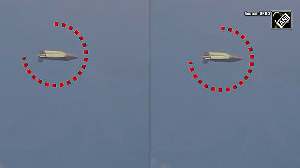Scientists claim to have uncovered evidence that our planet Earth is getting soft in the middle.
Researchers in the United States have carried out a study and found that material in part of the planet's lower mantle has unusual electronic characteristics, which make sound propagate more slowly, suggesting it is softer.
"What's most important for seismology is the acoustic properties -- the propagation of sound. We determined the elasticity of ferropericlase (mineral) through the pressure induced high-spin to low-spin transition.
We did this by measuring the velocity of acoustic waves propagating in different directions in a single crystal of the material and found that over an extended pressure range (from about 395,000 to 590,000 atmospheres), the material became 'softer' -- that is, the waves slowed down more than expected from previous work.
Thus, at high temperature corresponding distributions will become very broad, which will result in a wide range of depth having subtly anomalous properties that perhaps extend through most of the lower mantle," the ScienceDaily quoted lead researcher Alexander Goncharov as saying.
In fact, Goncharov and his colleagues at the Carnegie Institution's Geophysical Laboratory analysed the composition and density of the material after watching the velocity of seismic waves as they travel through Earth.
According to the researchers, the lower mantle extends from about 660 km to 2,900 km into Earth and sits atop the outer core.
Temperatures and pressures are so brutal there that materials are changed into forms that don't exist in the rocks at the planet's surface.
The pressures range from 230,000 times the atmospheric pressure at sea level to 1.35 million times sea-level pressure and the the heat is equally extreme -- from about 2,800 to 6,700 degrees Fahrenheit.
Iron is also abundant in the Earth, and is a major component of the minerals ferropericlase and the silicate perovskite in the lower mantle.
The results of the study have been published in the latest edition of the Science journal.
In previous work, researchers found that the outermost electrons of iron in ferropericlase are compelled to pair up under the extreme pressures creating a spin-transition zone within the lower mantle.
"What happens when unpaired electrons -- called a high-spin state -- are forced to pair up is the transition to what is called a low-spin state. And when that happens, the conductivity, density, and chemical properties change," said Goncharov.






 © 2025
© 2025